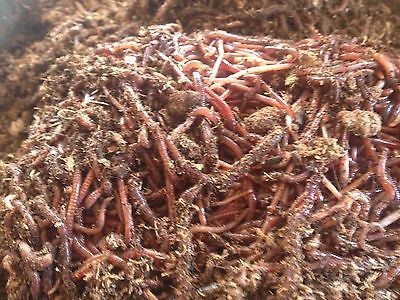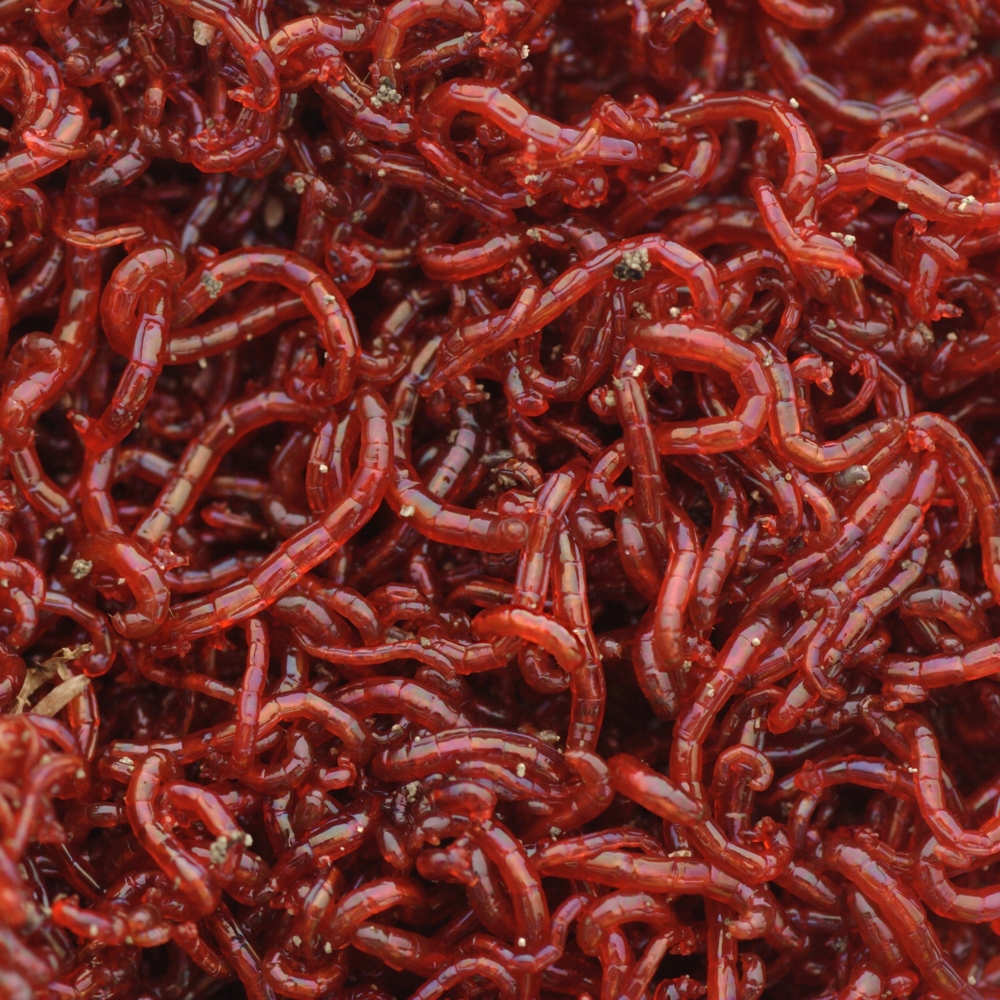Strong red worms: Improve your garden naturally
Strong red worms: Improve your garden naturally
Blog Article
Exactly How Red Wigglers Can Increase Your Organic Waste Recycling
Red wigglers represent an essential part in improving natural waste recycling, effectively transforming everyday cooking area scraps and yard debris right into valuable worm castings. This process not only reduces the quantity of waste sent to garbage dumps but likewise improves soil vigor, promoting healthier plant development without the requirement for artificial plant foods. Recognizing the complexities of establishing a vermicomposting system and the optimum treatment for these worms can considerably magnify the advantages. The concern remains: just how can one effectively integrate this technique right into their routine to maximize effect?

Benefits of Red Wigglers
Red wigglers, a sort of composting earthworm, offer numerous benefits that make them indispensable in organic waste recycling. Their ability to take in a variety of organic materials makes them extremely effective decomposers. These worms can refine kitchen area scraps, garden waste, and also paper products, changing them right into nutrient-rich castings. This procedure not only lowers the volume of waste sent out to garbage dumps but likewise enriches dirt health.
Moreover, red wigglers improve dirt aeration and drain via their tunneling tasks, promoting a healthier origin environment for plants. Their castings are abundant in advantageous microbes and important nutrients, cultivating durable plant growth and enhancing dirt structure (red wigglers). Moreover, making use of red wigglers in composting is an environmentally pleasant choice to chemical plant foods, which can have damaging negative effects.
Additionally, vermicomposting with red wigglers is a low-maintenance and effective approach of reusing organic waste, making it obtainable for households and communities alike. Their fast reproduction rate makes sure a constant supply for ongoing composting initiatives, additionally enhancing their advantages. On the whole, red wigglers offer as a critical part in sustainable waste management and dirt improvement practices.
Setting Up a Vermicomposting System
Creating an efficient vermicomposting system needs cautious planning and consideration of various aspects that add to its success. The structure of an effective system begins with selecting a proper container. Options range from business containers to homemade alternatives, but it is crucial that the container is well-ventilated and properly sized to suit the variety of red wigglers.
Following, the choice of bed linens product is crucial. Ideal bed linens includes shredded newspaper, cardboard, or coconut coir, which provides both a habitat and a source of carbon for the worms. The bed linen ought to be moistened however not excessively damp to avoid anaerobic problems.
Maintaining the optimum setting is essential. Red wigglers flourish in temperatures between 55 ° F and 77 ° F(13 ° C to 25 ° C )and call for a pH level around neutral. Keeping an eye on dampness degrees is additionally important, as way too much moisture can result in odor issues, while insufficient can dry out the worms.
Finally, putting the vermicomposting system in a shaded area safeguarded from direct sunshine will aid keep a stable environment. With these factors to consider in mind, one can successfully set up a growing vermicomposting system that enhances natural waste recycling.
What to Feed Red Wigglers
Feeding red wigglers the best materials is basic to keeping a healthy vermicomposting system. These worms prosper on a varied diet regimen mostly made up of raw material, that includes fruit and veggie scraps, coffee grounds, smashed eggshells, and shredded paper. It is vital to prevent feeding them meat, dairy, oily foods, or any refined products, as these can develop odors, bring in insects, and cause an undesirable environment.
A balanced diet plan for red wigglers advertises optimum digestion and nutrient production. Aim for a mix of environment-friendly products, high in nitrogen, such as veggie peels and yard cuttings, and brownish products, abundant in carbon, like dried out leaves and cardboard. This balance ensures a sustainable food source while keeping moisture degrees in the worm container.
Additionally, it is suggested to slice or shred larger scraps to accelerate decomposition and make the food a lot more obtainable to the worms. Frequently monitoring the consumption rate will aid determine the ideal quantity to feed, preventing overfeeding and preserving a thriving community. By supplying an appropriate diet regimen, you not only support the health and wellness of red wigglers however additionally boost the effectiveness of your vermicomposting initiatives.
Keeping Your Worm Bin
To ensure the health and productivity of your vermicomposting system, keeping your worm container is important. Regular tracking of dampness degrees is necessary; the bed linen ought to perspire however not soaked. If it comes to be also wet, excess dampness can cause anaerobic conditions, hurting your worms. Alternatively, if it is as well completely dry, worms might end up being inactive or die.
Severe temperatures can stress or kill your worms. To accomplish this, place your container in a climate-controlled atmosphere away from direct sunshine or warmth resources.
Gently transforming the bed linen with a yard fork every few weeks will assist freshen the material and prevent compaction - red wigglers. If this takes place, minimize feeding and add even more carbon-rich products like shredded paper or cardboard.
(Lake James Worms)
Utilizing Worm Spreadings in Horticulture

Worm spreadings, often described as "black gold" by garden enthusiasts, are a very healthy organic plant food that can dramatically improve dirt health and plant development. These spreadings are produced by red wigglers as they absorb raw material, resulting in a rich, dark, crunchy material including helpful microbes.
Including worm castings into garden dirt enhances its structure, aeration, and dampness retention, developing an ideal environment for origin advancement. The high nutrient content of worm castings, including nitrogen, phosphorus, and potassium, adds to energetic plant growth and increased returns. Furthermore, worm castings contain essential trace element and enzymes that promote the overall wellness of plants, allowing them to better hold up against bugs and illness.
Worm spreadings can be applied directly to the dirt or mixed right into potting mixes for container gardening. A slim review layer spread over garden beds or included to compost stacks can also boost the microbial activity and nutrient account of the compost. As a lasting and environment-friendly fertilizer alternative, worm castings sustain natural horticulture methods while decreasing dependence on synthetic plant foods, thus cultivating a healthier ecological community.
Final Thought
Finally, the combination of red wigglers right into organic waste reusing methods presents a sensible option for improving dirt health and wellness and advertising sustainable gardening strategies. By efficiently decaying kitchen scraps and yard waste, red wigglers add to nutrient-rich worm castings that enhance dirt aeration and wetness retention. This green method not only lowers landfill contributions however additionally diminishes the reliance on chemical plant foods, inevitably fostering much healthier ecosystems and responsible waste administration practices.
Report this page